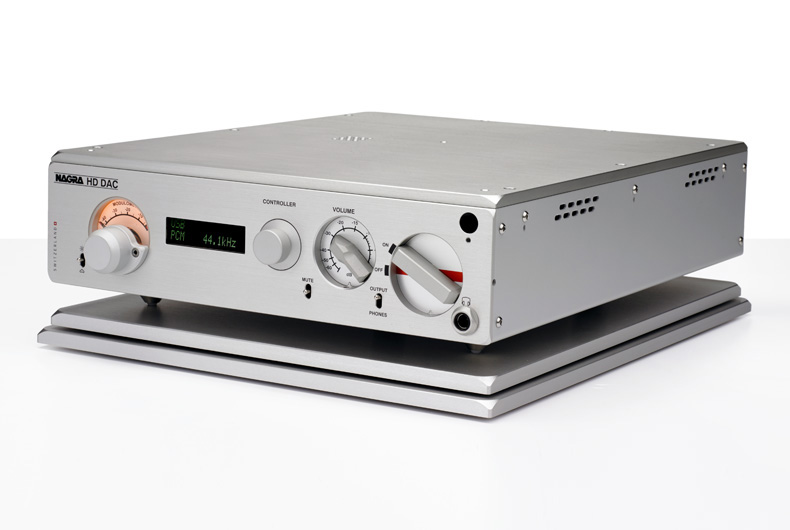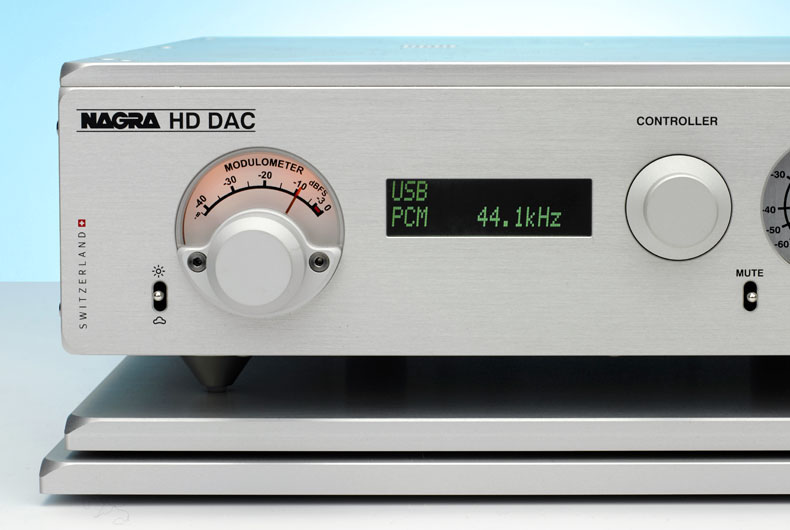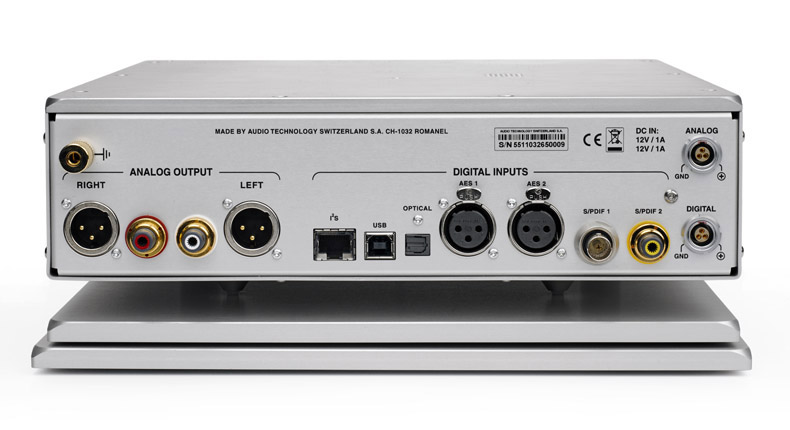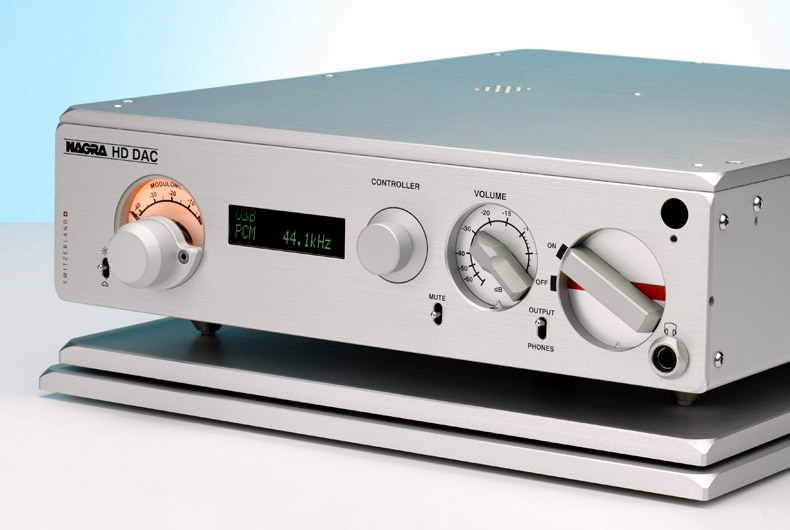What Hi-Fi? Verdict
If you’re looking for the last word in DACs, this Nagra is a front-runner
Pros
- +
Natural, fluid and informative sound
- +
Fine rhythmic capability and expressive dynamics
- +
Terrific build
Cons
- -
Display could be better
Why you can trust What Hi-Fi?
What’s the best DAC in the world? The best we’ve heard so far are the Chord DAVE and dCS Rossini DAC/Master Clock combination.
To that rather short and hugely talented list you can confidently add Nagra’s HD DAC. To top it all, it’s arguably the most desirable of the lot.
Nagra’s level of digital competence comes as something of a surprise. The HD DAC isn’t the company’s first digital product – it has made digital recorders, DACs and other digital products for decades – but the Swiss brand’s classy preamps and power amplification tend to grab the limelight in high-end circles.
DACs: everything you need to know
Build

While we love the appearance of Nagra products, it’s a shame the company hasn’t tried to differentiate the HD DAC a little more from legacy products. This unit is part of the no-compromise HD range, and represents a ground-up rethink on how a digital-to-analogue converter should be designed.
It’s easy to lose sight of that fact when the unit looks the same as products that were designed decades ago. But make no mistake; this really is an all-new, cutting edge design with older electronic circuit techniques rubbing shoulders with innovative new ideas.
The HD DAC is immaculately made, just like every Nagra product we’ve seen. Each panel is superbly machined and the unit as a whole feels immensely solid and robust. The price is high, but this is an investment that is designed to work for decades to come.
Features

It’s a compact unit, measuring just under 8cm high and 31cm wide (and 35cm deep). The front is dominated by the brand’s trademark signal level meter and stylised volume control. The latter means that this product can be connected directly into a power amp or active speakers.
Such a system configuration keeps the signal path short by bypassing the need for a dedicated preamp and the lengths of connecting interconnects used in between. The result should be a clearer, more transparent sound. On paper, the only downside is the lack of compatibility with analogue sources.
There’s a small display on the HD DAC’s front panel that suits the product’s understated nature, but it isn’t easy to read from a distance or off-axis. Nagra could do better here.
Elsewhere, there are lovely little metal switches for mute and to toggle the DAC’s output between line level – single-ended RCA and balanced XLR options – and the 6.3mm headphone socket on the front panel.
Around the back of the DAC you’ll find the full array of digital inputs from USB, coax (in both RCA and BNC forms) and optical, right through to a pair of AES/EBUs and a dedicated Nagra ISquaredS option.
You won’t find an IEC mains input though. Instead there are dedicated, separate power feeds for the analogue and digital sections. That suggests a sophisticated power supply arrangement, but more on that later.

We’ve come to the point in DAC development where cutting-edge premium DACs will play pretty much any established file type. The Nagra continues that trend. Its digital file compatibility is comprehensive, covering PCM up to 24-bit/384kHz and double speed DSD. We think that covers pretty much all the music files out there bar some ultra-niche recordings.
Take a look inside the Nagra and you’ll find plenty of clever and innovative engineering. Great care is taken to maintain the integrity of the digital data stream and optimising the transfer of that data between parts of the circuit.
The signal, even if it’s PCM, is converted to double-speed DSD internally. It’s then processed by a powerful, high-spec FPGA (Field Programmable Gate Array) that runs proprietary software majoring on timing precision, low distortion and generating a minimum of noise.
MORE: High-resolution audio: everything you need to know
Nagra was keen to avoid traditional digital techniques such as oversampling and conventional ‘brickwall’ filters – the kinds of things found in most rivals – because it feels that such elements introduce their own artefacts.
The analogue stage is similarly unusual and clever. It uses Nagra’s expertise in transformers (handmade in-house) and valves (a single JAN 5963 double triode) to maintain signal integrity.
The 5963 valve was engineered to work in digital circuits and was used in the early computers at a time before the first transistors became available, so its use in a high-end number-crunching modern DAC is kind of poetic.
At this level it should come as no surprise that the HD DAC is kitted out with high-grade internal components and made with extreme levels of care. That much is the least we would expect for this price.

The Nagra’s power supply arrangement is truly obsessive, with 25 separate internal supplies fed by two outboard units – one dedicated to the analogue section and the other for the digital.
If you’re buying at this level it makes sense to spend the extra £5100 it takes to own the MPS outboard power supply (pictured above) with its option of using ultra-low noise battery power. Once you’ve heard the sonic improvement the MPS makes across the board, it’s hard to do without.
To get the best from it, equipment at this level needs pampering. So it should go without saying that a top class digital source is essential. We use our reference Naim NDS/555PS for most of this test, but also draft in our MacBook Pro (loaded with Pure Music media software and plenty of good quality hi-res files).
We also use the Gamut D200i power amplifier as well as Nagra’s Classic Amp (also a power amp), feeding ATC SCM50 and Spendor Classic 2/3 speakers. All cables are from the premium end of Chord Cable’s range.
But there’s more to optimising the HD DAC than just finding quality partners. Like most equipment, it is sensitive to the support it’s placed on – the high level of transparency of any suitable partnering system makes even the smallest differences obvious – so use a low-resonance rack or shelf for the best results, preferably something that offers a good degree of isolation too.
Sound

It takes no more than a few seconds to realise that the performance of the HD DAC is straight out of the top drawer.
We start by using it with our usual Gamut D3i preamp and later swap to Nagra’s excellent Classic Preamp, but it doesn’t take us long to decide to use the HD DAC directly into the power amp. The system sounds clearer and more natural in such a configuration.
We play Bizet’s Carmen Suite and are treated to a wonderfully organic sound. If you are inclined to believe that digital equipment can’t sound natural, this DAC proves otherwise.
The presentation has scale and authority with a soundstage that’s as expansive as it is stable. Instruments are locked into position and things never sound cluttered, the DAC maintaining a pleasing sense of space around the instrumentation, no matter how dense or complex the score gets. It’s easy to follow instrumental strands, even if they’re low-level and in the background.
Things are convincing tonally. The Nagra is evenly balanced and admirably neutral, so instruments (and voices when present in the recording) sound believable with authentic textures and a pleasing degree of body.
While there’s plenty of refinement and a total lack of unwanted hardness, there remains a healthy dose of dynamic punch when required. The violent dynamic swings in Carmen Suite are rendered with confidence and enthusiasm – the switch from quiet to loud and back again handled with rare fluidity.

As we listen longer, we realise that the Nagra is digging out an uncommon amount of detail, even considering the elevated price point.
This detail isn’t thrown at the listener in a bid to impress, but it is strictly organised and correctly proportioned to serve the recording. Simply put, the Nagra doesn’t demand the spotlight. It steps out of the way leaving the music to grab all our attention.
Different types of music don’t wrong-step this DAC, either. Play some Nine Inch Nails and there’s plenty of attack and aggression, leaving the excitement intact. Switch to Bon Iver’s 22, Million set and the Nagra’s excellent organisation, coupled with superb rhythmic cohesion, makes light work of the album’s complex production.
Yet, when it comes to voices – Aretha Franklin’s Dr Feelgood or Adele’s Hometown Glory – the HD DAC sounds pure and transparent. It really is a brilliant all-rounder.
The story is just as positive through the headphone output. This has no problem driving the likes of Beyerdynamic’s T1s and Grado’s RS1 to high levels and retains the same admirable sonic characteristics as the line stages.
Verdict
The dCS Rossini DAC/Master Clock combination remains a terrific proposition and has the added attraction of a built-in UPnP streamer that can access music through your home network.
It just about edges the Nagra in outright detail resolution but for us, the HD DAC sounds more enticing and natural. Chord’s DAVE is terrific value in comparison to either the dCS or Nagra but, ultimately, isn’t as rounded a performer.
If you’re in the market for the ultimate DAC you’re not going to be wrong with any of these three products.
They’re all excellent in their own ways. But, if we had to choose, our money would go to Nagra.
See all our Nagra reviews
What Hi-Fi?, founded in 1976, is the world's leading independent guide to buying and owning hi-fi and home entertainment products. Our comprehensive tests help you buy the very best for your money, with our advice sections giving you step-by-step information on how to get even more from your music and movies. Everything is tested by our dedicated team of in-house reviewers in our custom-built test rooms in London, Reading and Bath. Our coveted five-star rating and Awards are recognised all over the world as the ultimate seal of approval, so you can buy with absolute confidence.


